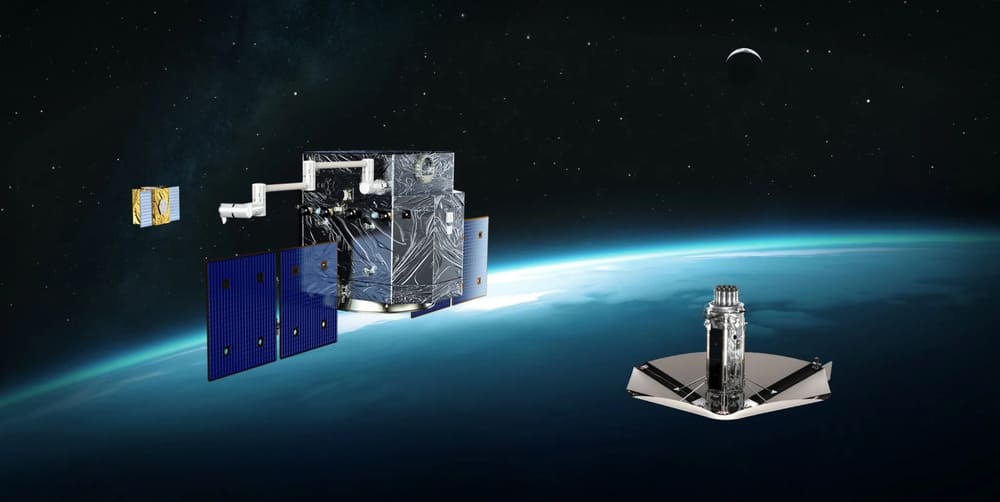Sierra Space, a company renowned for its development of Dream Chaser, a reusable spaceplane designed to ferry cargo and supplies to the International Space Station, has recently been awarded a major contract to build military satellites. The company now intends to broaden its reach in the national security market by providing in-orbit services and transportation.
The company currently has a defence backlog of $1.3 billion and is also considering potential opportunities for in-orbit services and transportation vehicles.
Sierra Space, a company renowned for its development of Dream Chaser, a reusable spaceplane designed to ferry cargo and supplies to the International Space Station, has recently been awarded a major contract to build military satellites. Sierra Space, a company renowned for its development of Dream Chaser, a reusable spaceplane designed to ferry cargo and supplies to the International Space Station, has recently been awarded a major contract to build military satellites. Additionally, Sierra Space has formed a partnership with Blue Origin to construct a commercially developed space station.
Sierra Space has recently received $1.3 billion worth of defense-related orders and is expanding into the national security space business.
Erik Daehler, the company’s vice president of orbital systems and services, who has previously worked at defense contractors Lockheed Martin and Boeing, is overseeing the transition of Sierra Space’s orbital vehicle technologies from their civil and commercial roots into militarized configurations to support defense operations.
The company has a defense backlog worth $1.3 billion, which includes a $740 million deal announced in January to produce 18 missile-tracking satellites for the U.S. Space Force’s next-generation missile-tracking satellite network built by the Space Development Agency.
Additionally, the company has contracts with undisclosed defense customers. According to Daehler, these contracts are with major acquisition organizations.
Sierra Space, a space company formed in 2021 as a spinout from Sierra Nevada Corporation, aims to provide space access, mobility, and logistics services to both commercial and government customers.
The company is targeting the emerging SAML market, which has $40 million allocated for it in the Space Force’s 2025 budget proposal.
Sierra Space has designed a satellite that is capable of precision rendezvous and close-proximity operations around other spacecraft. The company is proposing this vehicle to the Space Force as a means of providing in-orbit services such as refuelling and maintenance of military satellites.
Furthermore, Sierra Space is developing a return capsule that is capable of safely transporting cargo from space and landing it back on Earth. Sierra Space has partnered with the U.S. Transportation Command to conduct a study on how their vehicle can aid in the swift delivery of supplies and equipment for military operations or humanitarian relief efforts across the globe.
In order to cater to the defense market, they have set up a specialized test lab in Florida to design, build and test these space vehicles. It is worth noting that Sierra Space is headquartered in Louisville, Colorado.
Sierra Space has developed an in-orbit servicing vehicle called Spectre, which aims to automate maintenance functions at the International Space Station. This technology is expected to replace the work currently performed by astronauts or cosmonauts, and will be taken over by robotic systems on future commercial space stations.
The Ghost return capsule was developed in response to customer demand for a way to transport cargo from space to Earth for testing and inspection.
Additionally, an on-orbit demonstration of the Spectre vehicle is planned for 2025 or 2026, which will showcase its capabilities and potential for future use. The product is available for both government ownership and operation, as well as for purchase as a service by government customers.
Based on an article by Sandra Erwin spacenews.com


